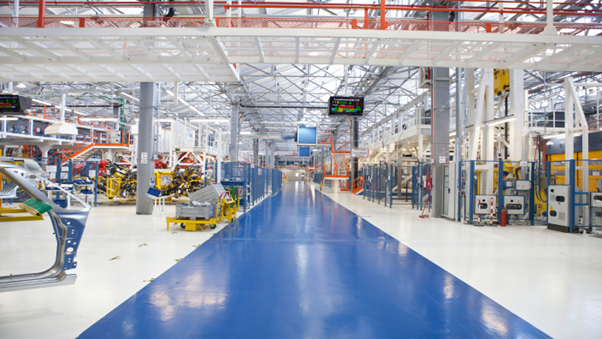Sustainable Manufacturing: Fixing The Factory Floor

(Source: www.automationalley.com)
Sustainable manufacturing creating goods through economically viable methods that reduce environmental harm will likely necessitate a complete overhaul of the manufacturing and industrial systems. Producers must reevaluate their approaches to designing, sourcing, manufacturing, delivering, and servicing all their products. This challenge can seem overwhelming. However, it is one that manufacturers must tackle as the demand for sustainability continues to increase.
Whether driven by stakeholder pressures, regulatory requirements, environmental concerns, or simply the pursuit of profit, manufacturers can no longer limit sustainability to lofty goals included in their annual reports. To achieve meaningful change, they must instead pledge to take definitive action. This action will need to commence on the factory floor. (Vincent Rutgers, 2021).
Auto manufacturers are adopting smart manufacturing strategies to modernize facilities and improve the sustainability of their operations.
Automakers are working to minimize energy consumption, reduce CO2 emissions, and decrease waste, ultimately aiming for greater sustainability overall. This effort not only benefits the manufacturers themselves but also serves two additional purposes. Specifically, embracing sustainability resonates with many customers who, increasingly aware of global sustainability challenges, seek out companies with objectives that align with their own. Furthermore, it aids manufacturers in complying with the increasing number of environmental regulations set by governments worldwide.
Here are a few statistics that highlight energy consumption and waste in the manufacturing sector:
- Industrial facilities account for 33% of all energy consumption on a global scale. Of this total, 77% of industrial electricity usage is attributed to manufacturing activities.
- According to one industry study, the energy needed to produce an average passenger vehicle amounts to 41.8 megajoules per kilogram (MJ/kg). This figure is put into perspective by noting it is approximately 40 times the energy required to operate a household appliance such as a washing machine.
- Waste generation presents a significant challenge as well. Between 2005 and 2022, the waste produced for car manufacturing increased by 32% per vehicle (Salvatore Salamone, 2023).
Smart manufacturing technologies that can help
Energy is utilized in automobile manufacturing facilities to operate production lines, weld components, handle materials and parts, perform metal forming, injection molding, and more. Additionally, energy is necessary for extracting raw materials, fabricating components, and transporting those components and other materials to a production site.
Smart manufacturing can provide support in various ways.
Firstly, auto manufacturers have the opportunity to upgrade their current facilities by integrating smart technologies, such as edge devices and sensors, to gather data from the manufacturing line. This generates a wealth of information for advanced data analysis to enhance performance optimization, track energy consumption, and facilitate predictive maintenance.
In conjunction with these technologies, automobile manufacturers can leverage machine learning and AI to assist in identifying anomalies and refining designs to minimize waste and energy consumption.
Other significant technologies being utilized include virtual simulations and digital twins. Manufacturers can implement these tools to design, execute, and assess operations in a controlled, virtual environment before transferring them to the actual shop floor. Moreover, digital twins provide manufacturers with greater insight into the operational function over both the medium and long term. For instance, they can conduct simulations to evaluate the durability of machinery and the frequency of required repairs.
A specialized application of digital twins is virtual commissioning. In this case, a digital twin model of a machine, production line, or entire facility is employed to optimize workflows prior to any construction or deployment. With this technology, an auto manufacturer can fine-tune procedures, enhance movements, minimize downtime, and ensure timely delivery of parts and materials to the assembly line.
Focusing more on the sustainability aspect of operations, an automobile manufacturer can employ virtual models of its production line to assess the environmental effects of its processes. Once again, these models can be utilized to adjust processes aimed at reducing waste and energy consumption.
When combined, these smart technologies enable auto manufacturers to enhance their processes and achieve intelligent operational excellence (Salvatore Salamone, 2023).
References:
- Forbes. (2021). Sustainable Manufacturing: Fixing The Factory Floor. Retrieved from https://www.forbes.com/sites/deloitte/2021/10/01/sustainable-manufacturing-fixing-the-factory-floor/
- RTINSIGHTS. (2023). Building a More Sustainable Factory Floor Leveraging Smart Manufacturing. Retrieved from https://www.rtinsights.com/building-a-more-sustainable-factory-floor-leveraging-smart-manufacturing/




Comments :